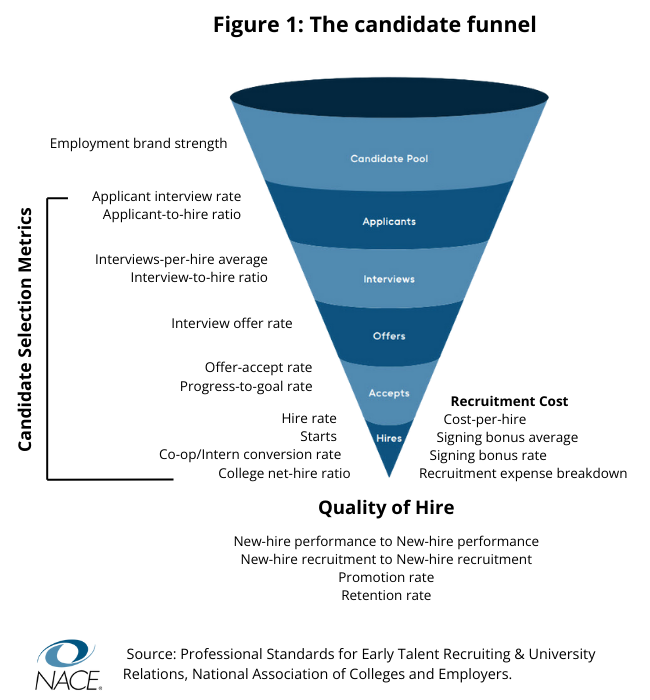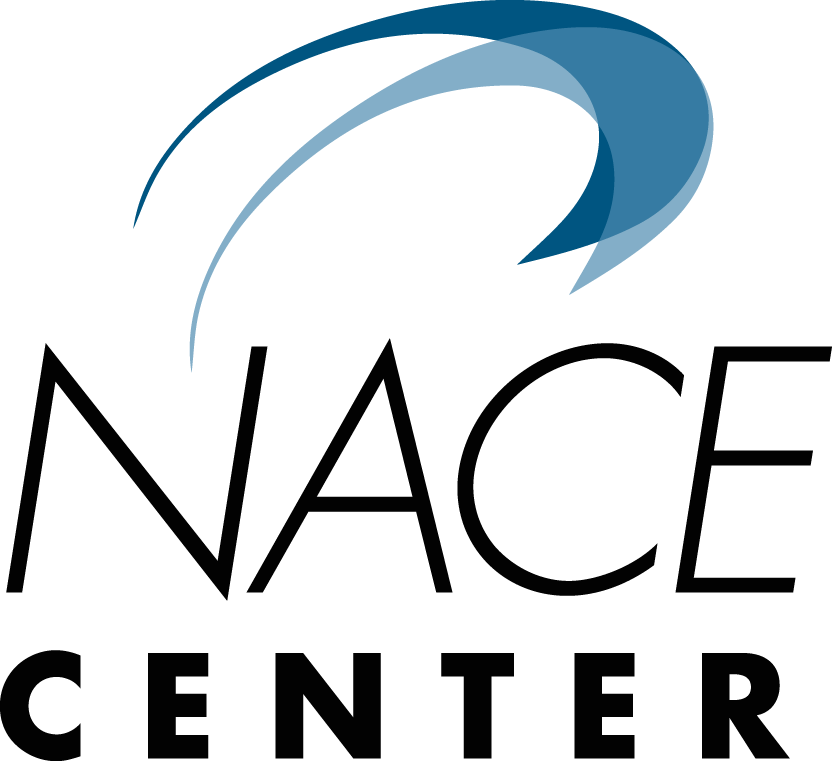Employment brand strength (EBS) is the perception of the student population, faculty, and staff at a university of an organization’s employment brand on campus. EBS is measured qualitatively, based on a score provided by campus recruitment contacts (recruiter) or feedback surveys of students, faculty, and staff.
EBS and other important metrics and measures are included in the updated NACE Professional Standards for Early Talent Recruiting & University Relations, which were recently released by the NACE Professional Standards for University Relations and Recruiting Task Force.
Why is EBS important, how can employers measure it, and how can employers make changes based on their results?
“Measuring employment brand strength is important to understand in developing and scaling your efforts on campus,” explains Christopher Carlson, senior manager of channels, partnerships, and events at ManTech.
“Understanding the brand will help determine if you need to consider broader awareness efforts or can focus on specific initiatives to optimize the relationship. The organization will need to assess what outcomes they are hoping to achieve from the university relationship—recruitment, research, and/or business relationships. The brand assessment can then inform the organization on where they need to focus their efforts and at what scale.”
Professional Standards for Early Talent Recruiting & University Relations
Developed by a task force of early talent recruiting and university relations professionals for early talent recruiting and university relations professionals, the Professional Standards offer a roadmap to excellence for programs of all shapes and sizes. Download the Standards on NACEWeb.Vanessa Strauss, senior advisor to the CHCO, Human Resources Organization, Federal Deposit Insurance Corporation, agrees about the importance of measuring EBS because it allows organizations to understand how potential and current employees perceive their company.
“This,” Strauss says, “is critical for attracting top talent, retaining employees, and ultimately impacting the organization's success. By measuring this strength, companies can identify areas to improve their employer brand, pinpoint strengths to leverage, and assess the effectiveness of their recruitment strategies, ultimately aiming to attract the best candidates and reduce hiring costs.”
A top goal for companies focusing on branding efforts is to build a reputation as an employer that helps them differentiate themselves from their competitors and demonstrate their unique mission, values, and culture, thus attracting high-quality candidates.
“University relations and recruiting professionals should remember that a strong employer brand will allow their organization to establish creditability among students, faculty, and career services,” Strauss says.
“Your strong brand is essential to how candidates perceive your organization as a workplace. It directly impacts whether they choose to apply; how engaged they are during the hiring process; and, ultimately, their decision to join your team. Your brand helps you stand out from the competition.”
Strauss points out that, in some cases, a strong brand can attract a higher volume of applicants and candidates of a higher caliber.
“Moreover, it significantly reduces hiring costs by lowering the time it takes to fill open positions and decreasing turnover rates,” she adds.
“Assessing faculty and staff perception of the employment brand can also be essential to the organization’s campus success, as these groups can influence the perceptions of the student population.”
While important, measuring the employment brand is difficult, as it is subjective. Unlike measures such as cost-per-hire, acceptance rate, conversion rate, and others, EBS cannot be measured in a quantitative way.
According to the NACE Professional Standards for Early Talent Recruiting & University Relations, some options for assessing student perceptions could include the number and quality of students who:
- Attend an information session or event;
- Visit the organization’s booth at a fair;
- Interview; and
- Engage via email after the campus visit.
Meanwhile, options for assessing faculty and career services perceptions include:
- Gauging the recruiter/team’s ability to get invited to give classroom presentations;
- The ease with which the recruiter/team can manage the organization’s on-campus experience; and
- The level of endorsement the organization receives as an employer from faculty and career services.
Though subject to interpretation based on the organization’s on-campus recruitment strategy, one method for obtaining a brand strength score could work by using a sliding scale to define each relationship. The early talent recruiting and university relations (ETR) team rates student, faculty, and career center staff advocacy on the part of the organization, as follows: No advocacy=1, Moderate advocacy=2, Solid advocacy=3, Exceptional advocacy=4.
When the groups’ scores are combined, ETR can assess gaps in its on-campus presence and identify where it may need to extend efforts to increase the employer brand. For example, if a score indicates exceptional student advocacy but a moderate relationship with career services, and career services staff are the gatekeepers of job postings and other on-campus recruitment activities, what steps need to be taken to develop that relationship? If the relationship were to improve, how might that reflect in the number of hires?
Carlson says that understanding EBS can be leveraged by an employer to identify areas of opportunity to achieve outcomes.
“For example,” he adds, “if engaging and assessing faculty and career services, there is limited advocacy, and there is a need to increase the hires from a major/department, the employer can develop a plan to share more information with faculty and career services, which may include targeted meetings; classroom presentations; sharing of collateral; and interactions with the business, such as tech expos, adjunct professors, and joint research.
“If the assessment is exceptional, the employer may look to sustain that relationship and look to further optimize the relationship through more advanced relations, such as research, ongoing meetings, on-site introductions/engagement at the employer site, joint research, and charitable contributions.”
Strauss says: “As competition for potential students heats up, university relations and recruiting professionals can use the Metric Funnel of the Standards [see Figure 1] to measure how they are doing in attracting good candidates. This metric shows you how to increase your brand strength on campus and clearly articulate your organization’s purpose and value through a compelling brand and helps you measure and track their brand health with a data-informed approach.”







